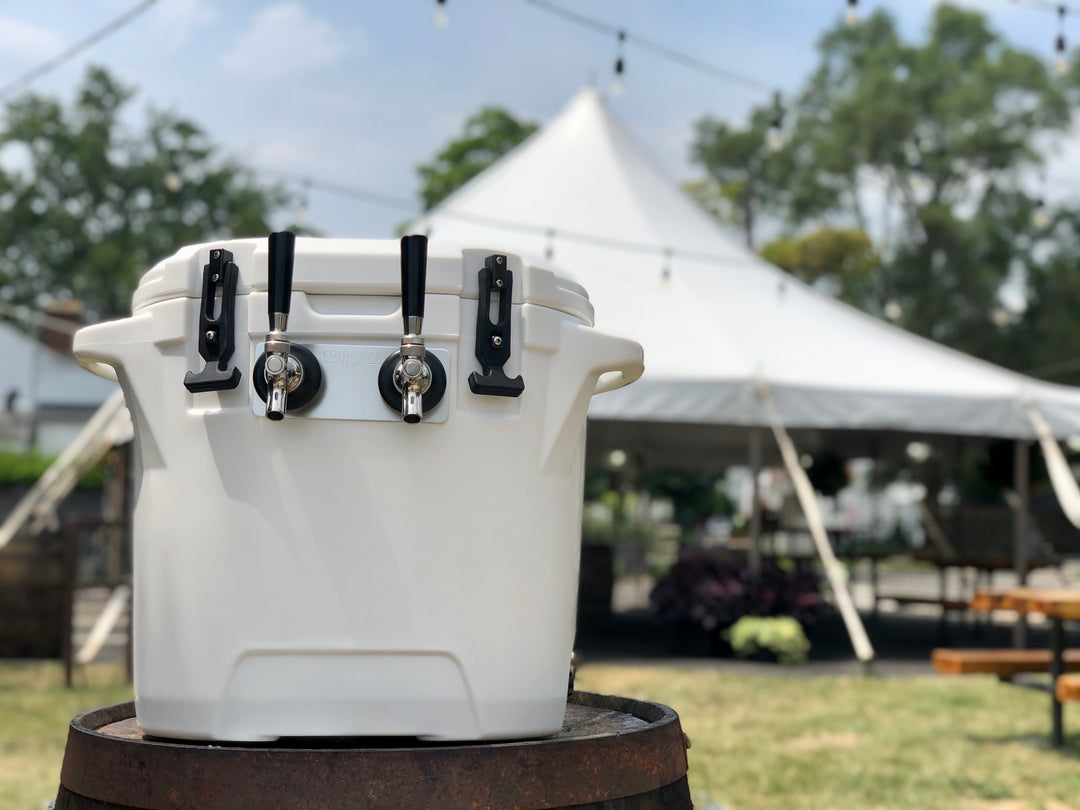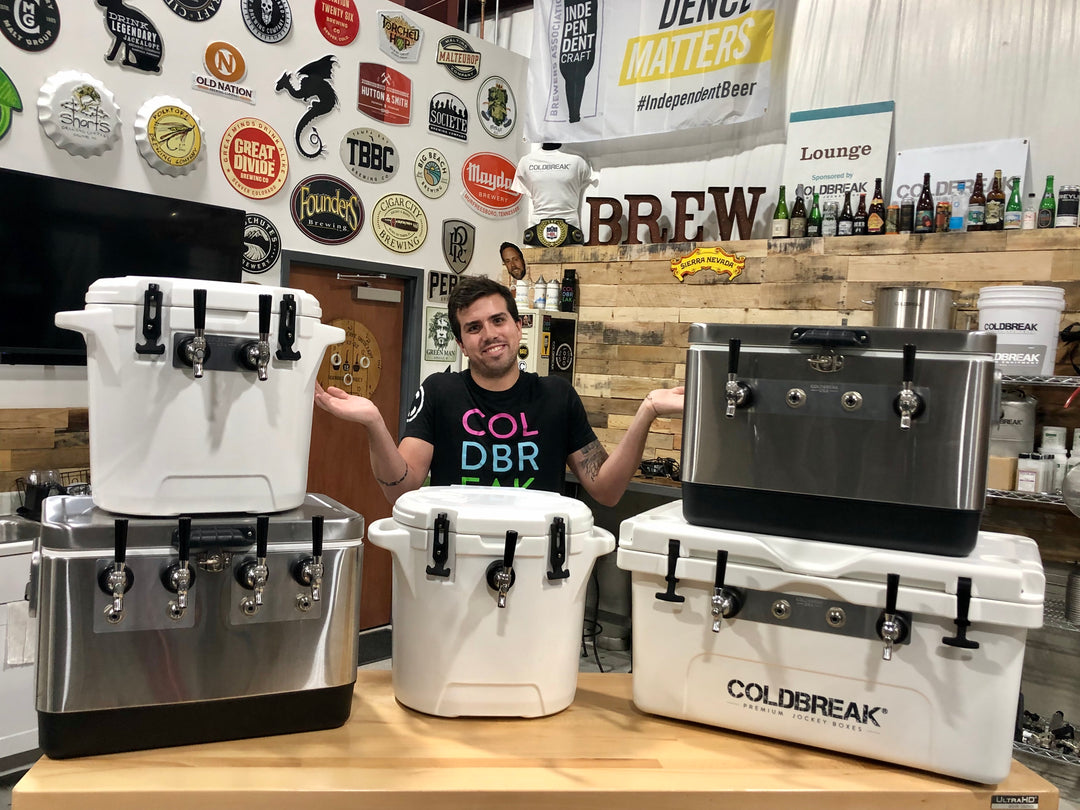US Keg Sizes and Their Measurement in Barrels
US Keg Sizes and Their Measurement in Barrels
As a beer enthusiast, mobile bar owner, or someone in the hospitality industry, you may have noticed that beer kegs come in different sizes, such as full size keg or a half barrel keg. But have you ever wondered why they are measured in barrels, what the standard pressure is when they leave the brewery, or what types of coupler connections are used to dispense beer from them? In this article, we will answer all of these questions and more to educate you on the different sizes of kegs used by breweries and available for consumer purchase in the United States.
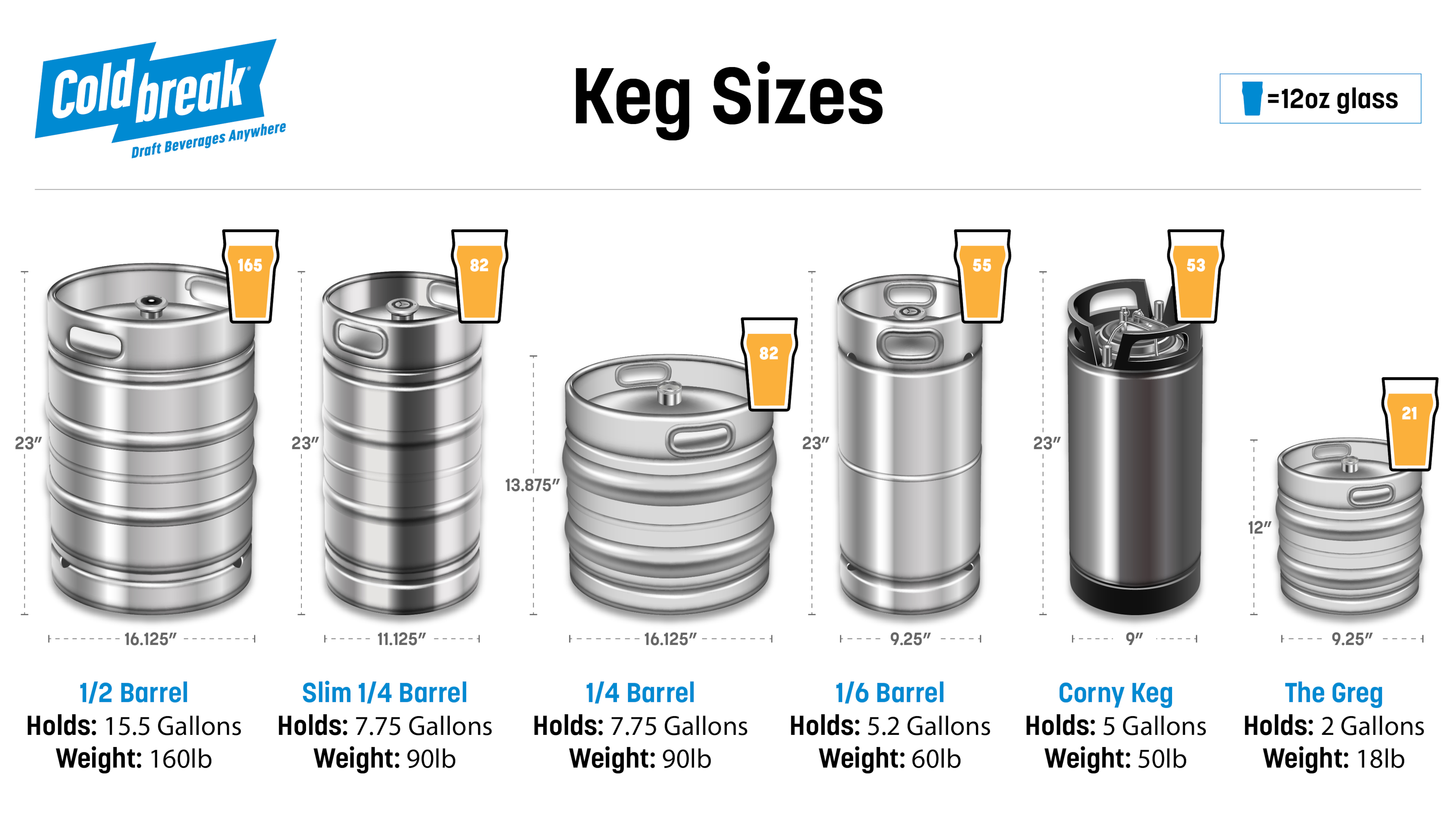
US Beer Keg Sizes
In the United States, beer kegs come in an array of sizes to suit different purposes and settings. Whether it's a major brewing operation, a neighborhood bar, or a homebrew enthusiast's garage, there's a keg size designed to meet the needs of every beer lover. Each keg size has its own unique name, typically derived from its capacity or its intended use.
The Greg:
Growler + Keg = "Greg" holds 2.0 gallons of beer (256 ounces), which is around 21 twelve-ounce servings, and is designed for at-home use. Perfect for batching or mixing cocktails.
The mini keg has a threaded spear which makes it easy to fill and clean without special equipment. With a D type (US Sankey) spear, it can be hooked up to draft lines, kegerators, or party pumps just like any other standard keg can.
Corny keg:
Cornelius Kegs, fondly nicknamed the "Corny" keg, has long been a favorite of homebrewers worldwide, and there's good reason for its popularity. Originally designed for dispensing soft drinks, it has since found a second life among the brewing community. It holds 640 ounces of beer, translating to around 53 twelve-ounce servings or 40 sixteen-ounce pints.
One of the key benefits of the Cornelius keg is its design for easy cleaning and filling. Corny kegs have a removable lid, which allows full access to the interior of the full keg. This makes it incredibly straightforward to clean between brews, an essential step to maintain the taste and quality of the beer.
The Cornelius keg uses a simple yet effective, ball lock, or pin lock connection system for dispensing. The system consists of two posts, one for gas in and one for liquid out, and a pressure relief valve on the lid for safety. Homebrewers can easily connect a CO2 tank to carbonate their beer and a faucet to dispense it, making the Corny keg a convenient, all-in-one solution for brewing, carbonating, and serving homebrewed beer.
Sixth Barrel Keg (1/6th):
A Sixth-Barrel Keg, often referred to as a "Sixtel" or "Log," holds 5.16 gallons, translating to about 42 pints or 55 twelve-ounce servings. These kegs are typically used for specialty and craft beers, which might not be consumed as quickly as more mainstream beers. The smaller size allows for a greater variety of beers to be offered without risking the beer becoming stale.
Quarter Barrel Keg (1/4):
Also known as the "Pony Keg," the Quarter-Barrel Keg holds half the amount of a Half-Barrel Keg, i.e., 7.75 gallons, which equates to approximately 62 pints or 82 twelve-ounce servings. These kegs are often used in smaller venues and for special events where a smaller variety of beer is being served, or there's a need to rotate kegs more frequently due to a wide range of offerings.
So, why do quarter-barrel kegs come in two different heights? The answer lies in their intended usage and storage requirements.
The standard quarter-barrel keg, with its wider diameter and shorter height, offers greater stability and is less prone to tipping over. It's often used in commercial settings where the kegs are stored in a keg room or cooler with plenty of horizontal space.
On the other hand, the slim quarter keg is designed for vertical space utilization. Its taller, narrower profile is ideal for locations with limited floor space but more vertical room. It's also a good fit for residential kegerators, where its slim design makes it easier to fit multiple kegs or to accommodate a keg alongside other items.
Half Barrel Keg (1/2):
The standard Half Barrel Keg is the workhorse of the keg family and the standard size used in the U.S. brewing industry. It holds 15.5 gallons of beer, which translates to around 124 pints or 165 twelve-ounce servings. Its name can be a bit misleading, as many people mistakenly believe this is a full-sized keg. However, in the world of brewing, a full barrel of beer actually holds 31 gallons, making this size a true half-barrel.
The weight of an empty Half-Barrel Keg, also known as the "tare weight," can vary based on its construction. Most standard half barrel kegs now are made from stainless steel, which is durable, corrosion-resistant, and perfect for maintaining the beer's quality. Typically, an empty Half Barrel Keg weighs about 30 pounds. Given that a gallon of beer weighs roughly 8.34 pounds, the beer alone in a full Half Barrel Keg would weigh around 129 pounds. Therefore, when you add the weight of the beer to the weight of the empty keg, a full Half Barrel Keg would weigh approximately 159 pounds. This weight can make handling and transportation a significant task, requiring specialized equipment like keg dollies or lifts.
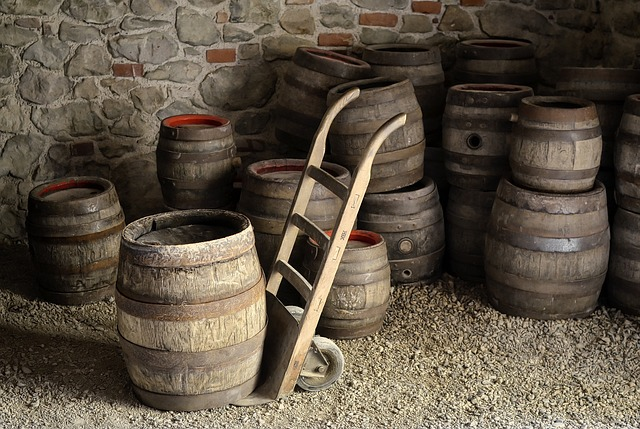
Beer Barrels: A Glimpse into Their Historic Past
The term "barrel" is deeply ingrained in beer brewing terminology worldwide, and its origin provides a fascinating glimpse into the history of beer brewing and distribution. The barrel played a pivotal role in the storage, transportation, and even taxation of beer, becoming an iconic symbol of the brewing industry.
Origins of the Beer Barrel
Historically, barrels were the most common method for storing and transporting a wide variety of goods, including beer. The barrel's circular design made it sturdy and easy to roll, facilitating transportation. It was also relatively simple to construct from readily available materials like wood.
The art of making barrels, known as cooperage, dates back thousands of years. Coopers would create these barrels by bending wooden staves and securing them with metal hoops. The craft was intricate, as the barrels had to be watertight to store liquids like beer.
Barrels in Beer Brewing
Barrels were not only used for beer storage and transportation but also played a crucial role in the beer fermentation process. Certain types of beer, such as traditional British ales, were conditioned in barrels. This method added unique flavors to the beer, influenced by the wood's characteristics.
Barrels as a Measurement Unit
Interestingly, the term "barrel" also became a unit of measurement in the beer industry. In the United States, a beer barrel is defined as 31 gallons. The origin of this particular measurement is a bit murky, but one theory suggests it evolved from the British "ale barrel," which was defined as 36 imperial gallons.
However, due to differing tax laws and regulations, the size of a "barrel" varied between countries and even between different cities within the same country. The U.S. standardized the measurement to 31 gallons for tax purposes in the 19th century.
Modern-Day Use
Today, most commercial beer is no longer transported or stored in actual barrels. Instead, it is kept in large, cylindrical vessels often referred to as kegs. However, the term "barrel" is still used as a measurement unit in the brewing industry.
In addition, many craft brewers and homebrewers are reviving the traditional method of aging beer in wooden barrels. These barrels often previously housed spirits like whiskey or wine, which can infuse the beer with unique, complex flavors.
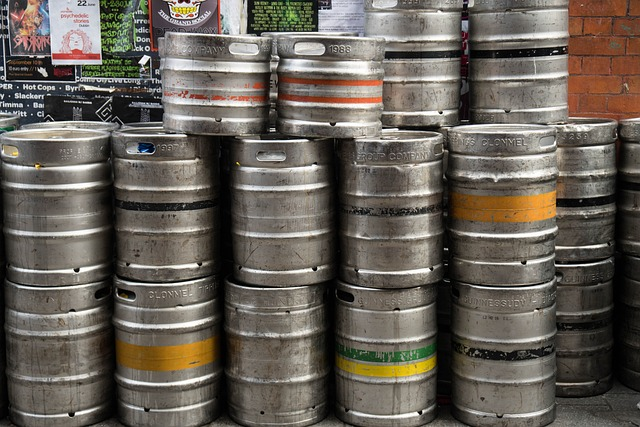
Keg Pressure: Unraveling the Importance of the 12 PSI Standard
In the world of draft beer systems, pressure is a critical component that can significantly influence the beer's quality, taste, and presentation. The keg pressure, often measured in pounds per square inch (PSI), is essential in maintaining the right level of carbonation in the beer from the keg to the glass. A common pressure for beer kegs is 12 PSI, and here's why.
The Role of Pressure in a Keg System
In a draft beer system, the role of the keg pressure is two-fold: it helps to push the beer from the keg through the lines to the tap, and it also maintains the beer's carbonation level. Carbonation gives beer its characteristic fizz and is a key factor in the beer's overall flavor and mouthfeel.
If the pressure is too low, the beer may lose carbonation and turn out flat. If the pressure is too high, it can over-carbonate the beer, leading to a foamy pour.
Why 12 PSI?
The ideal keg pressure for a beer depends on several factors, including the type of beer, the length and diameter of the beer lines, and the temperature of the keg. However, 12 PSI is a commonly used pressure for many types of beer served at around 38-40 degrees Fahrenheit.
This pressure is often a good balance for maintaining the beer's carbonation while also providing enough force to push the beer through the lines at an appropriate speed. It's suitable for many lagers and ales, which are commonly served in bars and restaurants.
That being said, some beers may require different pressures. For example, stouts and other nitrogen-infused beers often need higher pressures, while certain delicate craft beers may require lower pressures.
It's also important to note that the pressure may need to be adjusted depending on the specifics of a balanced draft system, such as the length and elevation of the beer lines.
Important side note: jockey boxes and mobile bars are typically unbalanced draft systems. These will require different PSI's for pouring beer, depending on your setup.




